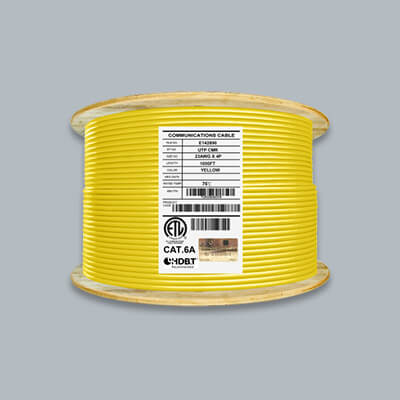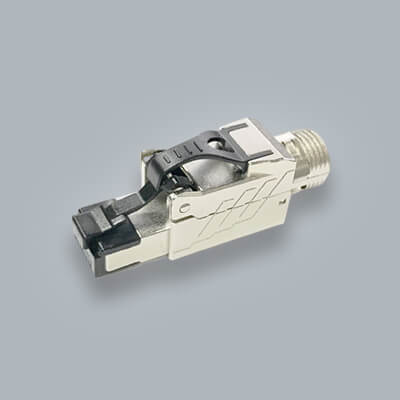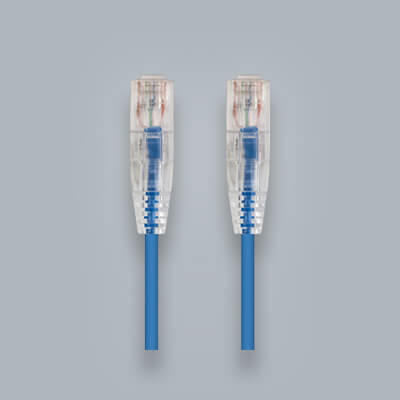Understanding TIA/EIA Standards

In the wide landscape of modern technology, where seamless connectivity is important, standards play a pivotal role in ensuring interoperability, reliability, and efficiency. Among the myriad of standards governing telecommunications, the TIA/EIA standards stand out as guiding lights, illuminating the path towards robust and scalable communication infrastructure. Let's jump into the documentation of the TIA/EIA standards, uncovering their significance and impact on the world of connectivity.
Unraveling TIA/EIA Standards: A Brief Overview
The Telecommunications Industry Association (TIA) and the Electronic Industries Alliance (EIA) joined forces to establish a framework for telecommunications standards, collectively known as TIA/EIA standards. These standards encompass a wide array of areas within the realm of telecommunications, including cabling, networking, and equipment specifications.
Standards:
- ANSI/TIA-568.0 Generic Telecommunications Cabling for Customer Premises
- ANSI/TIA-568.1 Commercial Building Telecommunications Infrastructure Standard
- ANSI/TIA-568.2 Balanced Twisted-Pair Telecommunications Cabling and Components Standard
- ANSI/TIA-568.3 Optical Fiber Cabling And Components Standard
- ANSI/TIA-568.4 Broadband Coaxial Cabling and Components Standard
- ANSI/TIA-568.5 Balanced Single Twisted-pair Telecommunications Cabling and Components Standard
The Backbone of Connectivity: TIA/EIA Cabling Standards
At the heart of any network lies the physical infrastructure, and TIA/EIA cabling standards provide the blueprint for its construction. Whether it's the copper-based twisted pair cables or the fiber optic strands transmitting data at the speed of light, these standards ensure consistency and performance across diverse environments.
Cat5e, Cat6, Cat6A: These familiar terms denote different categories of twisted pair Ethernet cables, each specifying the maximum data rates and transmission characteristics. From the ubiquitous Cat5e supporting Gigabit Ethernet to the high-performance Cat6A enabling 10 Gigabit Ethernet over longer distances, these standards cater to varying bandwidth requirements.
Fiber Optic Cabling: TIA/EIA standards extend their reach to fiber optic cabling, defining parameters such as core diameter, modal bandwidth, and attenuation limits. Whether it's single-mode fibers for long-distance transmission or multi-mode fibers for shorter distances, adherence to these standards ensures reliable data transmission in optical networks.
TIA/EIA Networking Standards
In the dynamic landscape of networking technologies, interoperability is key. TIA/EIA networking standards provide a common language for networking equipment manufacturers, enabling seamless integration and compatibility. From Ethernet to Wi-Fi, these standards lay the groundwork for robust, scalable, and interoperable network infrastructures.
Ethernet Standards: TIA/EIA standards delineate the specifications for Ethernet networking, encompassing parameters such as data rates, frame formats, and signaling methods. Whether it's the ubiquitous 100BASE-T or the lightning-fast 10GBASE-T, adherence to these standards ensures interoperability and compatibility across Ethernet-based networks.
Wireless Standards: With the proliferation of wireless technologies, TIA/EIA standards also encompass specifications for wireless networking, including Wi-Fi and cellular networks. From Wi-Fi standards like 802.11ac to cellular standards like LTE, adherence to these standards facilitates seamless connectivity in the wireless world.
Ensuring Compliance: The Importance for Manufacturers
While understanding TIA/EIA standards is essential for navigating the landscape of modern telecommunications, it's equally crucial for manufacturers to ensure compliance with these standards in their products. Compliance and certification with TIA/EIA standards signify that a product meets the specified requirements for interoperability, reliability, and performance.
Manufacturers who adhere to TIA/EIA standards demonstrate a commitment to quality and compatibility, instilling confidence in consumers and businesses alike. Compliance with these standards not only ensures that products work seamlessly within established network infrastructures but also minimizes the risk of compatibility issues and malfunctions.
Moreover, obtaining certification for adherence to TIA/EIA standards can open doors to new markets and opportunities. Many industries and sectors require products to meet specific standards to be eligible for procurement or deployment. By aligning with TIA/EIA standards, manufacturers position themselves as trusted partners in the development of robust and reliable telecommunications solutions.
Furthermore, compliance with TIA/EIA standards fosters innovation and advancement within the industry. As manufacturers design products to meet the stringent requirements outlined in these standards, they contribute to the evolution of technology and drive progress towards more efficient and interconnected communication systems.
In summary, for manufacturers, compliance with TIA/EIA standards is not just a matter of meeting regulatory requirements; it's a strategic imperative that enhances product quality, expands market opportunities, and drives innovation in the ever-evolving landscape of modern telecommunications.
Future Trends
Standards for 5G and Beyond: With the rollout of 5G technology revolutionizing wireless communications, TIA/EIA standards are expected to adapt to accommodate the unique requirements of 5G networks. This includes specifications for enhanced data rates, reduced latency, and increased network capacity to support the proliferation of high-bandwidth applications and services. Looking ahead, the development of standards for 6G networks will likely become a focal point, addressing even more advanced capabilities such as terahertz communication, holographic imaging, and ultra-reliable low-latency communication (URLLC).
Internet of Things (IoT) Devices: The proliferation of IoT devices and smart technologies necessitates robust standards for interoperability, security, and scalability. TIA/EIA standards are poised to address the connectivity challenges posed by IoT devices, ensuring seamless integration and communication across diverse networks and platforms.
Smart Buildings: As buildings become increasingly interconnected and intelligent, TIA/EIA standards will play a crucial role in defining the infrastructure requirements for smart buildings. This includes standards for integrated communication systems, building automation, energy management, and occupant safety, paving the way for more efficient and sustainable building environments.
By anticipating and addressing these emerging trends, TIA/EIA standards will continue to serve as the cornerstone of modern telecommunications infrastructure, enabling the seamless integration of advanced technologies and driving innovation in connectivity solutions.
Conclusion
In the maze of modern telecommunications, TIA/EIA standards act as guiding lights, showing us the way to create, be compatible, and future-ready. Whether it's the cables forming network backbones or the protocols enabling smooth communication, sticking to these standards ensures we navigate connectivity complexities confidently. Let's embrace TIA/EIA standards' principles as we journey towards a connected future.
By following TIA/EIA standards, we ensure our networks are not just reliable and effective but also compatible, allowing seamless communication in various settings. So, next time you plug in an Ethernet cable or join a Wi-Fi network, remember the unseen standards framework that makes it all work.





